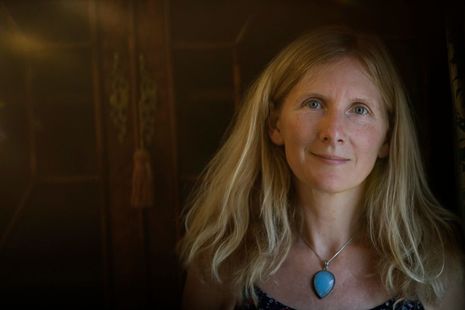Booker-winning Orbital marks a new age in climate fiction
Samantha Harvey’s space novel radically uproots readers from their home planet, forcing us to regard it from a distance

“It’s not out of self-pity, but I definitely saw myself as being on the periphery,” admitted Samantha Harvey following her “underdog” win at the Booker Prize this week. Though Harvey is correct that her competitor Percival Everett was the bookies’ favourite to take home this year’s preeminent literary award, I don’t think the author was referring to her chances at winning. Her stellar novel, Orbital, exists within the periphery, centring on astronauts at the edge of Earth’s orbit and revealing the speed with which our awareness of the planet’s significance in our lives is rapidly slipping into the margins.
“Orbital could forge a promising new path for climate fiction”
The novel raises questions about ownership which seem burningly allegorical of the current moment in the climate crisis. Situating these six astronauts aboard the International Space Station, spinning far away from their home planet, Harvey causes readers to reflect on which party gains the most from this relationship. It becomes clear that this is not a relationship at all, but that these characters are hardly individuals, each an (infinitesimal) part of the Earth they have left behind. The first passage of the novel states its intent in no uncertain terms: “The earth is a mother waiting for her children to return, full of stories and rapture and longing”.
In a bold move which could forge a promising new path for climate fiction, Harvey ruptures this mother-child dynamic, thrusting her characters far into orbit and forcing them to appraise this relationship from a distance. In one brief yet striking moment of exposition (of which there are many), one astronaut recalls an art lesson on Vélazquez’s ‘Las Meninas’, which features the artist within his own painting, complicating the distinction between art and artist, painting and viewer: “Or — the teacher said — is it just a painting about nothing? Just a room with some people in it and a mirror?”
This offers a useful analogy for the astronauts’ experience in the novel, watching the Earth (which they are inextricable from) framed by the space station window, as if a painting. One of the astronauts receives news of their mother’s death while in orbit, offering a clear microcosm for the dynamic between individual and planet which Harvey constructs, and delivering a prescient warning that we might soon be orphaned too.
“Harvey shows us what life would be like without the earth beneath our feet, the trees rustling above us”
There are clear similarities between Harvey’s novel and Richard Powers’ Booker-nominated and Pulizter-winning Overstory. The two novels employ a similar blend of detached third-person narration and intimate engagement with the existential plight of the planet, though Harvey achieves this by pushing her characters far away from the Earth, whereas Powers’ novel made a case for their proximity to it.
While Powers’ book attracted some criticism for its rather awkward depiction of people (as the Smoky Mountains-dwelling author seems far more familiar with nature than with his fellow humans), Harvey’s attempt is elevated by her deft human touches. Though the novel features little direct dialogue, it is the author’s bravura use of free-direct narrative discourse which humanises the piece, allowing her to deftly flit in and out of their relationship with, and yearning for home. It’s no wonder, then, that Harvey’s mastery of this intrusive yet light-of-touch narration caused none other than the Booker Prize’s chief executive to dub her “this generation’s Virginia Woolf”.
Each chapter marks the beginning of a new orbit on the space station — the cycle by which the six astronauts have begun to live by, rather than the days which govern the lives of their loved ones back home. This motif, which Harvey reminds us of with every new chapter, again centres the Earth in the lives of these characters, which literally sits at the centre of their existence — a position usually filled by the sun.
While previous successes in the climate fiction genre have sought to radically immerse readers within nature (see Powers, or Laline Paull’s hive drama The Bees), Harvey does the opposite. She shows us what life would be like without the earth beneath our feet, the trees rustling above us. As this version of reality seems increasingly possible, she causes readers to ask whether humans would survive. Or, more saliently, whether life would be worth living.
 Features / Meet the Cambridge students whose names live up to their degree9 September 2025
Features / Meet the Cambridge students whose names live up to their degree9 September 2025 News / Student group condemns Biomedical Campus for ‘endorsing pseudoscience’10 September 2025
News / Student group condemns Biomedical Campus for ‘endorsing pseudoscience’10 September 2025 News / Tompkins Table 2025: Trinity widens gap on Christ’s19 August 2025
News / Tompkins Table 2025: Trinity widens gap on Christ’s19 August 2025 Science / Who gets to stay cool in Cambridge?7 September 2025
Science / Who gets to stay cool in Cambridge?7 September 2025 News / New left-wing student society claims Corbyn support11 September 2025
News / New left-wing student society claims Corbyn support11 September 2025









